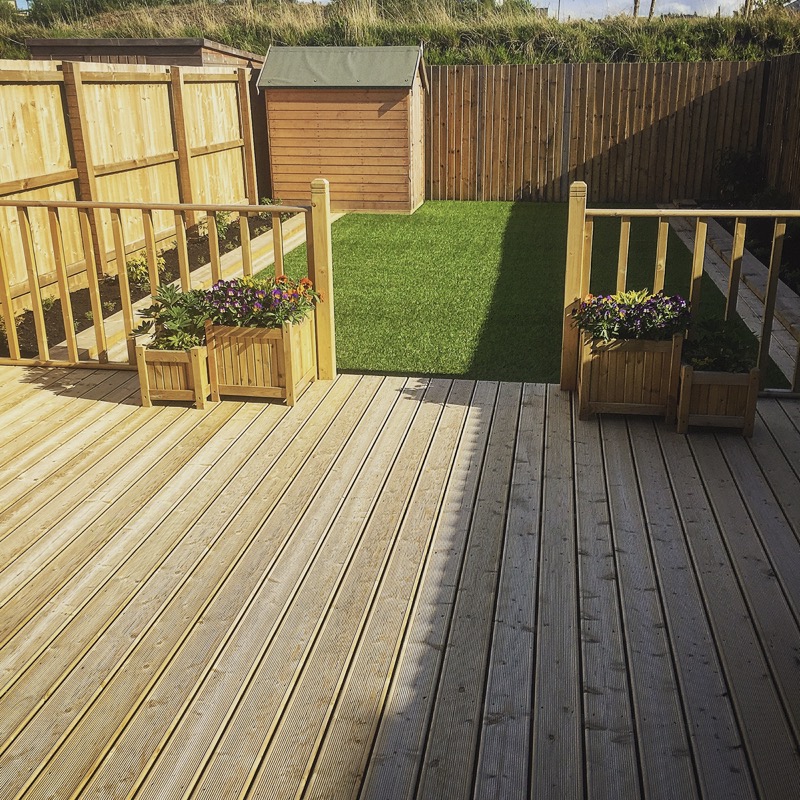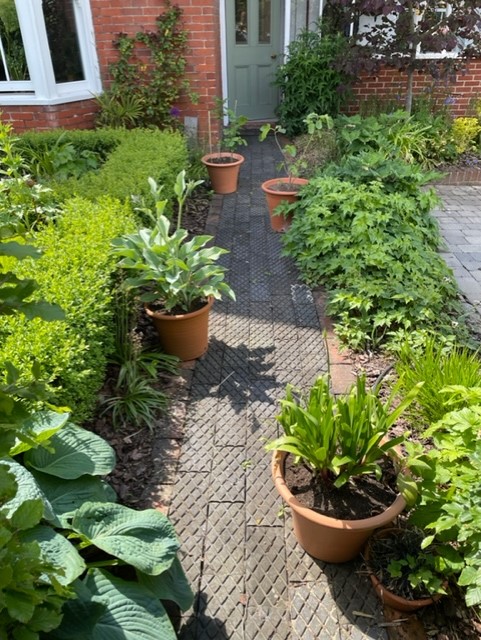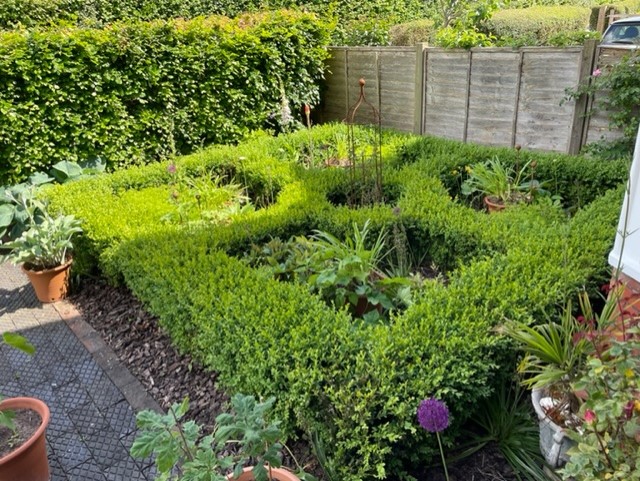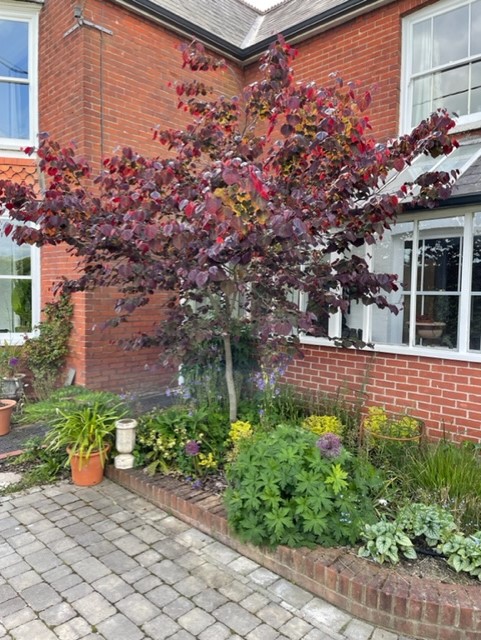Over recent years the dominant garden trend is for low-maintenance gardens, this has become so important for people that in some cases all organic life has been removed and covered completely with paving slabs, artificial grass and plastic weed suppressant membranes.

The picture above shows a modern low-maintenance approach to design, but with very limited benefit to wildlife or our own environment
Gardens especially in more rural areas should be a haven for wildlife and help link the house through the garden into the surrounding environment. The addition of as much plant life as possible can have a great effect on the health of the surrounding wildlife as well as on the physical and mental health of the people living inside the property.
As landscape professionals we are in a position to influence the future of garden design and construction, so let’s all try to do our part in encouraging more plants and trees into the gardens we work on, let’s use hard landscaping materials to build the structure of the garden and provide the areas needed within the clients brief trying to use the plants and trees to provide the shade, structure and the sole of the garden.
Choose landscaping products that work well with plants
There are a great number of hard landscaping products that work well with plants from Indian Sandstone Paving and even more contemporary Italian and European Porcelain Paving Slabs can be used to provide the backdrop for a range of planting schemes. You just need to consider the balance of plants and hard surfaces at the early stages of planning your garden to ensure you achieve the correct proportions of each, avoid over powering your garden with vast areas of hard landscaping materials.
Opt for low-maintenance plants
The addition of plants doesn’t necessarily mean lots of maintenance, try using herbaceous perennials in your planting plan, these only need a tidy up after they have died back in the winter and will return year after year. Pots can easily be moved around to change the design and are easily stored on a porch over winter to protect less hardy plants.
Choose alternatives to natural and artificial grass
A Natural lawn is the highest maintenance part of a garden and over recent years people have been removing their lawns and replacing them with Artificial Grass, which is not the most environmentally friendly practice. Why not remove your lawn and instead have gravel or bark chip seating areas, surrounding these areas with larger planting beds. Even with the additional weeding of the beds, the time you will save by not moving the lawn will be massive. You will also be removing something that has very little benefit to wildlife and replacing it with plants and trees that can greatly help the bio-diversity of your local environment and provide food and shelter for insects, that will in turn encourage the birds and other wildlife.


My own front garden shows the start of my attempts to encourage wildlife at the same time as blending with the style of my house and the surrounding countryside.

Use Amenity or play bark chips
Maintenance can be further reduced by the application of a layer of Amenity or Play bark chips over all the planting beds, this will reduce weed growth and help reduce water evaporation, both of these benefits greatly reducing maintenance requirements. The Bark Chip also will degrade, helping fertilise the soil, promoting plant growth as well as providing food and habitats for countless insects that are essential for a healthy garden.
Natural Stone & Timber supplies landscape materials across Portsmouth, Poole, Winchester, Tadley and Romsey.
Explore our outdoor garden products here or contact us here with a question.

